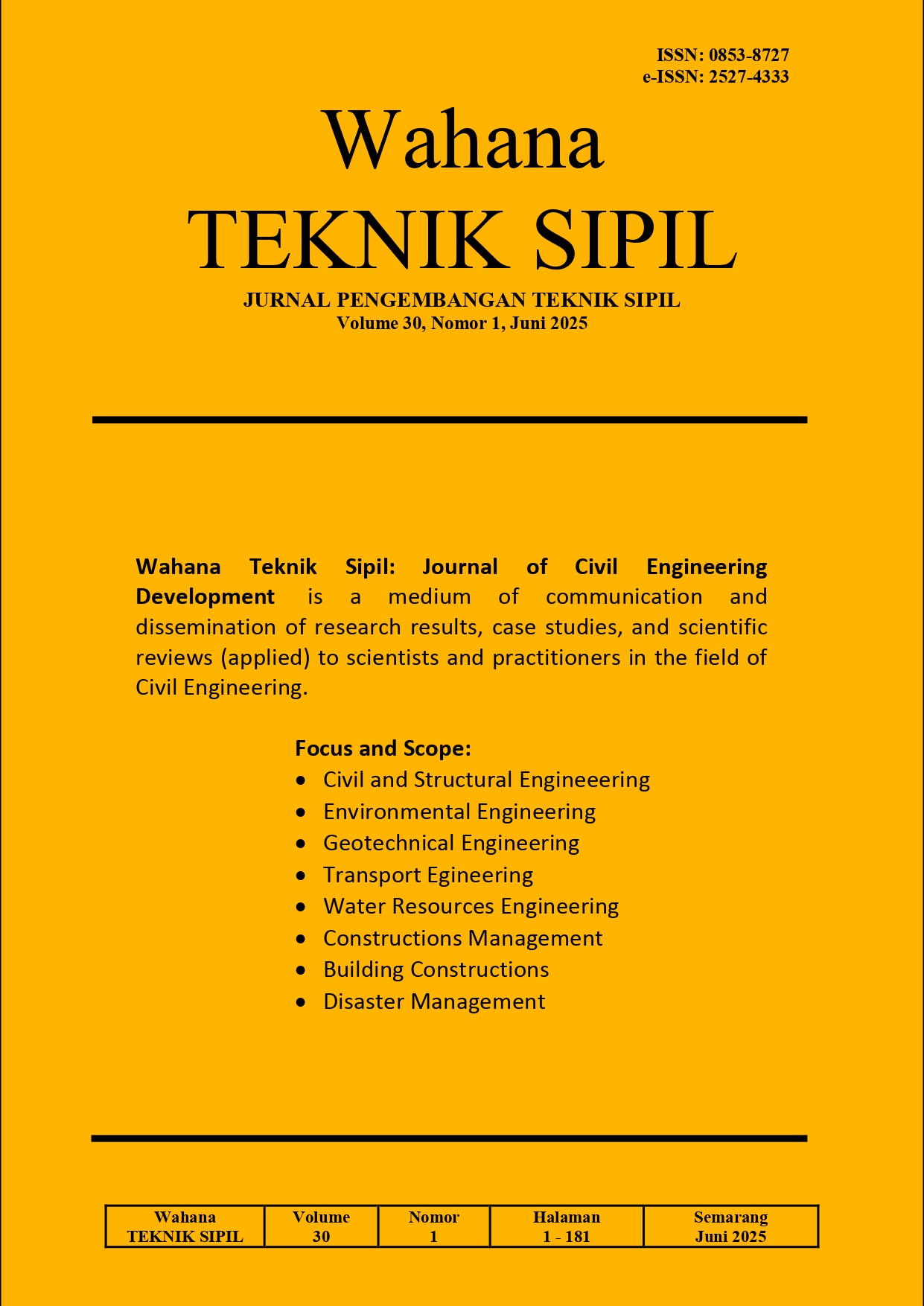EXPERIMENTAL AND NUMERICAL STUDY RETROFITTING BEAM WITH EXPANSION IN THE SUPPORT AREA
DOI:
https://doi.org/10.32497/wahanats.v30i1.6648Abstract
Retrofitting is one way to strengthen a building to withstand earthquakes and is often called an earthquake-resistant structure. Retrofitting beams will increase strength, stiffness, and ductility so that the structure is still stable when experiencing large earthquake forces. In addition to experimental methods, numerical methods are also used by researchers in developing a study of the behavior of building structures. Numerical methods using finite element software can examine the behavior of strength, stiffness, and ductility in beams. With this background, the author conducted a study of the retrofitting behavior of beams that were widened in the support area using numerical methods and theoretical analysis. The purpose of this study has been achieved so that a conclusion can be given that retrofitting with widening in the beam support area can increase the beam capacity quite significantly. Numerical, experimental, and theoretical analyses showed nominal moments of beam as 12.49 kNm, 14.07 kNm, and 10.20 kNm, respectively, and shear strengths as 17.84 kN, 20.10 kN, and 13.70 kN, respectively. Based on numerical research, with wide expansion reinforcement in the cross-sectional dimensions, the beam strength is increased by almost 45% and the beam stiffness is increased by 13- 40% while ductility does not show a significant difference. These results are also expected to show the same behavior in experimental testing so that it will strengthen this reinforcement method. Experimental and numerical testing will be conducted in this study so that it will maintain the results and it is hoped that they can be accepted and practiced in the world of building construction.
Downloads
Published
Issue
Section
License

This work is licensed under a Creative Commons Attribution 4.0 International License.
Authors who publish with this journal agree to the following terms:Authors retain copyright and grant the journal right of first publication with the work simultaneously licensed under a Creative Commons Attribution License that allows others to share the work with an acknowledgement of the work's authorship and initial publication in this journal.
Authors are able to enter into separate, additional contractual arrangements for the non-exclusive distribution of the journal's published version of the work (e.g., post it to an institutional repository or publish it in a book), with an acknowledgement of its initial publication in this journal.
Authors are permitted and encouraged to post their work online (e.g., in institutional repositories or on their website) prior to and during the submission process, as it can lead to productive exchanges, as well as earlier and greater citation of published work (See The Effect of Open Access).






